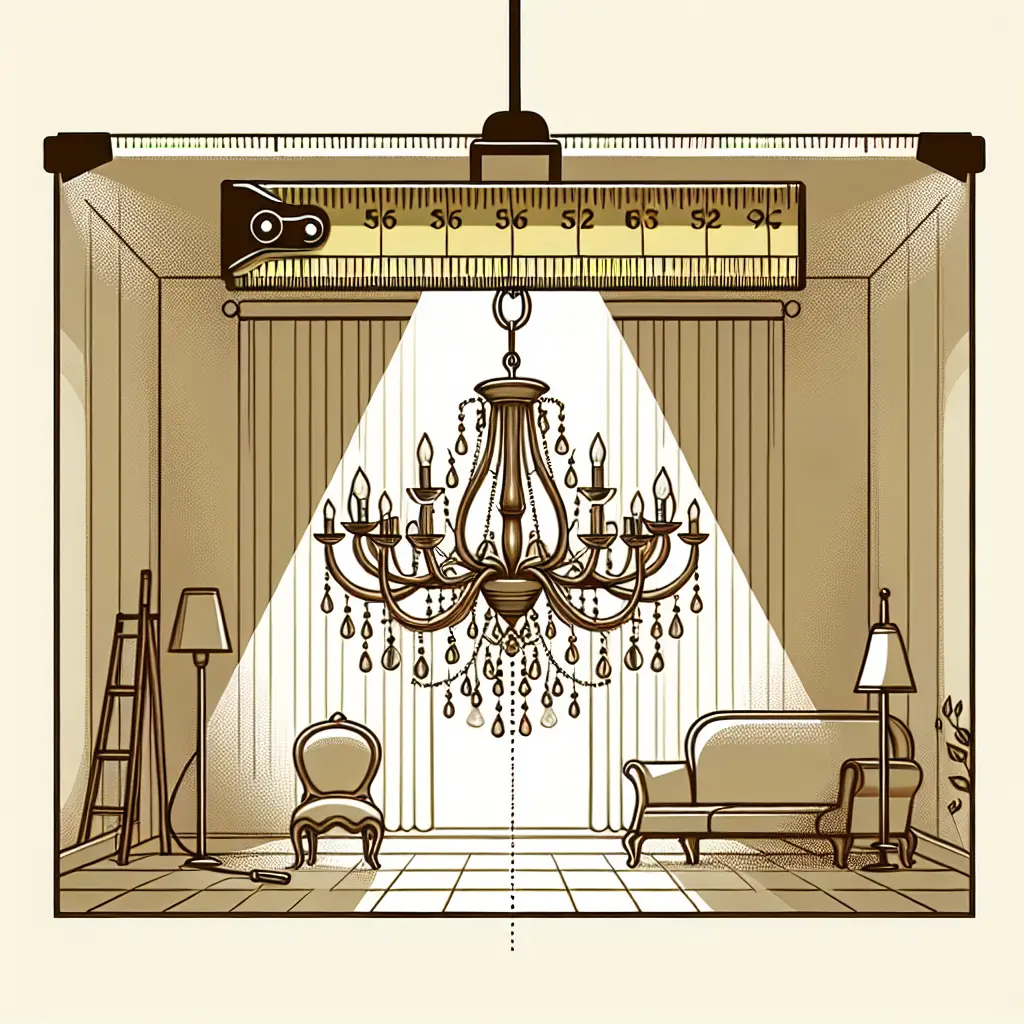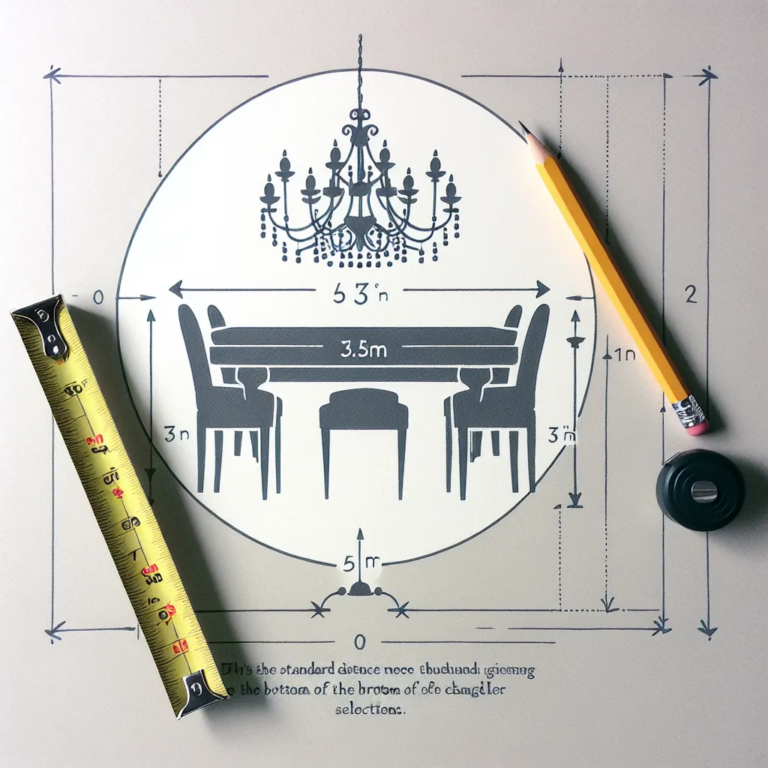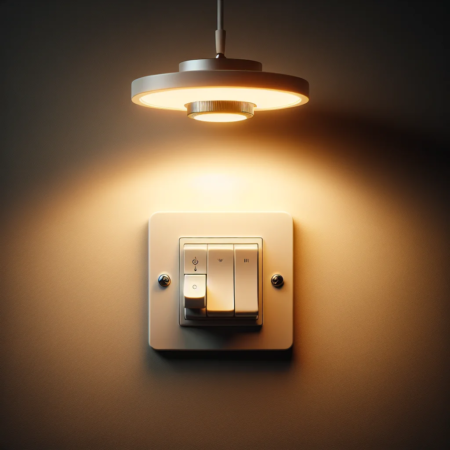Check out this Youtube video: If you want to learn how to properly size a chandelier for your space, this video will give you the tips and tricks you need.

Contents
Understanding the Space
When it comes to determining the chandelier size based on room dimensions in feet, this is a crucial step to ensuring the perfect balance and aesthetic in any room. The method is quite simple, where we add the dimensions of the room together in feet, and then convert the answer to inches.
For instance, if we have a room that is 20′ x 20′, an ideal chandelier would be around 40″ wide, preserving the equilibrium and ensuring a visually appealing setting.
For rooms with standard 8-foot ceilings, a chandelier that is 20-24 inches in height is recommended for an optimal fit. Additionally, when it comes to the ceiling height and tabletop measurement, for ceilings higher than 8 feet, the suggested clearance is 36 to 40 inches, maintaining a harmonious spatial relationship.
Furthermore, considering the style and visual weight of the chandelier is vital in determining the recommended size. A visually heavy fixture might warrant a slightly smaller size, while visually lighter fixtures can be wider, blending seamlessly into the room.
It’s important to note that the right chandelier should be proportional to the height and width of the room, considering the room’s visual weight and size. For example, rooms smaller than 10 by 10 feet usually require a 17-20″ wide chandelier, ensuring that the fixture doesn’t overpower the space and complements the dimensions effectively.
To summarize, the process of sizing a chandelier based on room dimensions involves a simple method of adding the room dimensions together and converting the answer to inches. Additionally, considerations such as ceiling height, visual weight, and room size play a pivotal role in ensuring the most suitable chandelier size for any given space, ultimately elevating the room’s aesthetic appeal and functionality.
| Room Dimensions (Feet) | Chandelier Size (Inches) |
|---|---|
| 20′ x 20′ | 40″ |
Factors to Consider
When sizing a chandelier for a room, there are several factors to consider to ensure it complements the space effectively. The first consideration is the ceiling height, as it directly influences the chandelier’s proportion and visual impact within the room. For rooms with standard ceiling heights, typically ranging around nine feet, a chandelier with a standard drop length can be chosen. However, for rooms with higher ceilings, it is essential to opt for a chandelier with a longer drop or chain to maintain visual balance and prevent it from appearing disproportionate.
Beyond ceiling height, furniture placement plays a crucial role in determining the appropriate chandelier size. The chandelier should be centered above the primary furniture grouping in the room, such as a dining table or seating area. This ensures that the chandelier serves as a focal point and effectively illuminates the intended space. Additionally, considering the overall room size is important in determining the chandelier’s scale. For larger rooms, a larger chandelier with multiple lights may be suitable, while smaller rooms may call for compact, single-tiered chandeliers to avoid overwhelming the space.
To simplify the process of choosing the right chandelier size based on room dimensions, consider the following table:
| Room Size | Chandelier Diameter (Approx.) | Chandelier Drop Length (Ceiling Height Approx.) |
|---|---|---|
| Small Room | 18 inches – 24 inches | 20 inches – 24 inches |
| Medium Room | 24 inches – 36 inches | 24 inches – 30 inches |
| Large Room | 36 inches – 48 inches | 30 inches – 36 inches |
By carefully balancing these factors, a suitable chandelier size can be selected to enhance the aesthetic appeal and functionality of the room, creating a visually pleasing and harmonious ambiance.
Choosing the Right Style
When it comes to matching the chandelier size with the style and design of the room, it’s essential to consider various factors to achieve a harmonious and aesthetically pleasing look. The chandelier should not only complement the style and design elements of the room but also serve as a functional and eye-catching centerpiece.
To ensure that the chandelier’s size aligns with the room’s style, follow these steps to make an informed decision.
Consider the Style and Design Elements of the Room
Evaluate the existing style and design elements of the room, such as the furniture, color scheme, architectural features, and overall ambiance. For instance, in a room characterized by modern and minimalist decor, a sleek and simple chandelier with clean lines would seamlessly blend in. On the other hand, in a room with traditional or vintage aesthetics, a crystal or candle-style chandelier could enhance the overall ambiance.
Analyze the Room’s Size and Scale
Assess the dimensions of the room, including its length, width, and ceiling height. For larger rooms, a sizable chandelier can make a striking statement, while smaller rooms may benefit from a more modestly sized chandelier to avoid overwhelming the space.
It’s crucial to strike the right balance to ensure that the chandelier neither dominates nor gets lost within the room’s dimensions.
Determine the Purpose of the Chandelier
Consider the intended function of the chandelier. Is it primarily for decorative purposes, functional lighting, or both?
For instance, in a dining room, the chandelier serves as a focal point while providing ambient lighting. In this case, the chandelier’s size and style should align with the room’s function and the desired lighting effect.
Selecting the Right Type of Chandelier
Explore the various types of chandeliers, such as crystal, candle-style, drum, sputnik, and more, while keeping the room’s design in mind. Each type of chandelier exudes a unique style and visual impact, so it’s essential to choose one that resonates with the overall design scheme of the room.
Refine the Chandelier Size and Style
After considering the above factors, it’s time to narrow down the options and select the chandelier that best complements the room’s style. To visually assess the chandelier’s potential impact, utilize online room visualization tools or seek guidance from interior design professionals to ensure a perfect match.
Matching the chandelier’s size with the style and design of the room involves carefully evaluating the existing decor, analyzing room dimensions, understanding the chandelier’s purpose, exploring chandelier types, and ultimately refining the selection to create a harmonious and visually captivating space.
| Style Consideration | Details |
|---|---|
| Existing Room Elements | Modern, vintage, minimalist, traditional, color palette, architectural features, ambiance |
| Room Size and Scale | Length, width, ceiling height, proportion to room size |
| Chandelier Functionality | Decorative, functional, ambient lighting |
| Chandelier Types | Crystal, candle-style, drum, sputnik, square/rectangle, globe, and more |
| Refinement Steps | Utilize online visualization tools, seek professional advice |
Tips for Installation
To hang a chandelier at the appropriate height and ensure proper lighting coverage, it’s essential to follow specific guidelines and steps. Here’s a comprehensive guide to help you with the installation process:
Height Recommendation for Hanging a Chandelier
The general recommendation for hanging a dining room chandelier is to maintain a distance of 30-36 inches between the bottom of the chandelier and the top of the dining table. This is particularly applicable for an 8-foot high ceiling.
For living rooms, consider positioning the chandelier based on the room’s size and design.
Step-by-Step Installation Process
-
Measure Ceiling Height: Begin by measuring the ceiling height to determine the ideal placement of the chandelier. This will help in ensuring that the chandelier is neither too low nor too high.
-
Select a Suitable Fixture: Choose a chandelier that complements the room’s aesthetics and aligns with the size of the space. Consider the design, materials, and lighting requirements.
-
Turn Off Power: For safety, it’s crucial to turn off the power supply to the area where the chandelier will be installed. This can be done at the circuit breaker or fuse box.
-
Remove Existing Fixture: If there’s an existing light fixture in place, carefully remove it and disconnect any electrical wiring.
-
Mounting the Chandelier: Carefully follow the manufacturer’s instructions for mounting the chandelier. This typically involves securing the mounting bracket to the ceiling and ensuring it can support the weight of the chandelier.
Ensuring Proper Lighting Coverage
To guarantee adequate lighting coverage, consider the overall layout and furniture arrangement in the room. Properly position the chandelier to ensure that its light effectively illuminates the space without creating glare or shadows.
Electrical Tips and Safety Precautions
It’s advisable to seek the assistance of a professional electrician for chandelier installation, especially if you are uncertain about electrical connections and safety protocols. Additionally, consider the wattage and type of bulbs suitable for the chandelier to achieve the desired lighting effect.
Regular Maintenance and Cleaning
Once the chandelier is installed, it’s important to establish a routine for cleaning and maintenance. Dust accumulation can affect the lighting quality, so periodic cleaning is essential for preserving the chandelier’s appearance and functionality.
Optimal Positioning Over Specific Areas
For specific areas such as kitchen islands or dining tables, ensure that the chandelier is positioned to provide adequate light coverage and visibility. Following the recommended distance from the surface of these areas helps achieve an optimal spread of light.
By adhering to these guidelines and meticulous attention to detail, you can successfully install a chandelier at the perfect height while ensuring optimal lighting coverage. A well-placed chandelier not only enhances the aesthetic appeal of a room but also creates a captivating ambiance.

Question: How to Size a Chandelier?
When determining the appropriate chandelier size for a room, it’s crucial to consider the room’s dimensions and design factors. To calculate the ideal chandelier size, follow these steps:
Step 1: Measure the Room
Begin by measuring the length and width of the room in feet. For example, if the room measures 10 feet by 14 feet, the sum would be 24 feet.
Step 2: Convert Measurements to Inches
After obtaining the total in feet, convert it to inches to get the suitable chandelier diameter. In this case, the optimal chandelier size would be 24 inches.
Step 3: Consider Ceiling Height
Next, take into account the ceiling height. Multiply the distance from the floor to the ceiling by 2.5 to determine the approximate chandelier height in inches.
Step 4: Assess Other Factors
It’s essential to consider additional elements such as personal style preferences and the interplay of light from other sources when selecting the right chandelier size for a space.
Step 5: Choosing the Right Chandelier Size
When choosing a chandelier, make sure to align its size with the dimensions of the room in which it will be installed. Factors like style and design should also be taken into consideration.
Step 6: Use a Chandelier Size Calculator
To simplify the process, leverage online chandelier size calculators that consider room dimensions, ceiling height, and personal style to recommend an ideal chandelier size.
Following these steps ensures a meticulous and thoughtful approach when sizing a chandelier for any room.
| Room Dimensions | Chandelier Size (Diameter) | Chandelier Size (Height) |
|---|---|---|
| 10′ x 14′ | 24″ | Calculated based on ceiling height |





